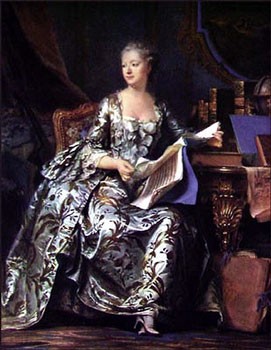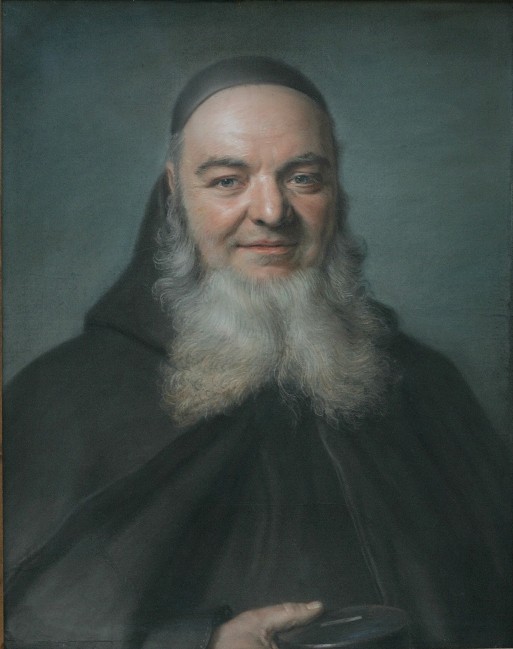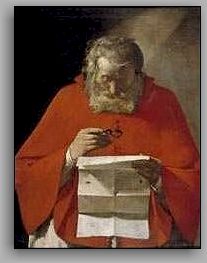Maurice Quentin de la Tour (1704-1788)
Get a De La Tour Certificate of Authenticity for your painting (COA) for your De La Tour drawing.
For all your De La Tour artworks you need a Certificate of Authenticity (COA) in order to sell, to insure or to donate for a tax deduction.
Getting a De La Tour Certificate of Authenticity (COA) is easy. Just send us photos and dimensions and tell us what you know about the origin or history of your De La Tour painting or drawing.
If you want to sell your De La Tour painting or drawing use our selling services. We offer De La Tour selling help, selling advice, private treaty sales and full brokerage.
We have been authenticating De La Tour and issuing certificates of authenticity since 2002. We are recognized De La Tour experts and De La Tour certified appraisers. We issue COAs and appraisals for all De La Tour artworks.
Our De La Tour paintings and drawings authentications are accepted and respected worldwide.
Each COA is backed by in-depth research and analysis authentication reports.
The De La Tour certificates of authenticity we issue are based on solid, reliable and fully referenced art investigations, authentication research, analytical work and forensic studies.
We are available to examine your De La Tour painting or drawing anywhere in the world.
You will generally receive your certificates of authenticity and authentication report within two weeks. Some complicated cases with difficult to research De La Tour paintings or drawings take longer.
Our clients include De La Tour collectors, investors, tax authorities, insurance adjusters, appraisers, valuers, auctioneers, Federal agencies and many law firms.
We perform Maurice Quentin De La Tour art authentication, appraisal, certificates of authenticity (COA) , analysis, research, scientific tests , full art authentications. We will help you sell your Maurice Quentin De La Tour or we will sell it for you.

Maurice Quentin de la Tour was a French portrait painter of the Rococo style, who worked primarily with pastels. Among his most famous subjects were Voltaire, Louis XV, and Madame de Pompadour. He was born in Saint-Quentin, Aisne, the son of a musician who disapproved of his painting career. At the age of fifteen, La Tour went to Paris where he entered the studio of the Flemish painter Jacques Spoede. He then went to Rheims in 1724, and England in 1725, returning to Paris to resume his studies around 1727. After his return to Paris, he began working with pastels.

In 1737 La Tour exhibited the first of a splendid series of 150 portraits that served as one of the glories of the Paris Salon for the next 37 years. He was able to endow his sitters with a distinctive air of charm and intelligence, and he excelled at capturing the delicate play of facial features.

In 1746, he was received into the Academie Royale and in 1751 was promoted to councillor. La Tour was made portraitist to the king in 1750, a position he held until 1773, when he suffered a nervous breakdown. For a time, the painter Joseph Ducreux was his only student. He founded an art school and became a philanthropist before being confined to his home because of mental illness. He retired at the age of 80 to Saint-Quentin.

de la Tour Discovery
 The director of the Instituto Cervantes, César Antonio Molina, the director of the Museo del Prado, Miguel Zugaza, and Professor José Milicua, a Trustee of the Museum, today announced the discovery of a previously unknown work by the French artist Georges de la Tour (1593-1652).
The director of the Instituto Cervantes, César Antonio Molina, the director of the Museo del Prado, Miguel Zugaza, and Professor José Milicua, a Trustee of the Museum, today announced the discovery of a previously unknown work by the French artist Georges de la Tour (1593-1652).
The attribution was made by Professor Milicua, while the painting belongs to the Spanish State and was on long term deposit at the Palacio de la Trinidad, headquarters of the Instituto Cervantes.
The discovery of the painting, now identified as undoubtedly a work by La Tour depicting Saint Jerome reading a Letter, is an exceptionally important one, as it represents a further addition to the small corpus of known works by the leading French painter of the 17th century. Only one other work by La Tour is to be found in Spain: the Blind Man playing the Hurdy-gurdy, acquired by the Museo del Prado in 1991 with funds from the Villaescusa Bequest.
The recently discovered painting of Saint Jerome reading a Letter by Georges de la Tour depicts the saint half-length, without any specific attributes, situated in the centre of the composition and reading a letter, holding a pair of pince-nez.
Given the lack of documentary evidence, the attribution as argued in the report by Professor Milicua and the opinion of other experts consulted – has been based on the quality of handling, which is comparable to other autograph works by the artist. It can be detected in details such as the free brushwork of the hair and the characteristic light touches to the picture surface made with the point of the brush, as well through comparisons with other similar compositions.
Until now, the only early biographical reference to locate a work by La Tour in Spain is a reference by the Count de Maule, a 19th-century traveler.
In 1813, the Count pointed to the existence of the painting “Man blowing on an ember to light his pipe, by Georges de la Tour” in the collection of Sebastián Martínez, a collector and friend of Goya who lived in Cadiz.
The whereabouts of that canvas is now unknown, although a number of copies exist.
For this reason, the first and only work which has until now filled the total gap in this great master’s representation in Spain is the painting acquired in London by the Museo del Prado in 1991, once again underlining the importance of the present discovery of Saint Jerome reading a Letter.
Recognition of Georges de la Tour as one of the most important French painters of the 17th century dates back to 1915, when the great German connoisseur Hermann Voss definitively identified De La Tour as the author of some of his famous night scenes.
Since then, various exhibitions and a recent bibliography have added to and disseminated our knowledge of the artist’s oeuvre. The only exhibition to have been devoted to De La Tour in Spain was the one held in 1994 at the Museo del Prado, which reunited the series of “Musicians”, with a catalogue by Juan J. Luna, Curator at the Museum.
Georges de La Tour was born in Vic sur la Seille (Lorraine) in 1593 and died in Lunéville (Lorraine) in 1652. He is known to have been “painter in ordinary” to the King of France and to have received commissions from the Duke of Lorraine as well as other leading members of the regional aristocracy, but the high esteem in which he was held during his lifetime soon declined after his death.
For this reason, there is little secure information with regard to his artistic training, although his evident early absorption of elements of Caravaggio’s style may point to a possible study trip to Italy. On the other hand, he may have gained this knowledge in Flanders or, less probably, in Paris.
Still wondering about an 18th century French painting in your family collection? Contact us…it could be by Maurice Quentin de la Tour.
Reviews
1,217 global ratings
5 Star
4 Star
3 Star
2 Star
1 Star
Your evaluation is very important to us. Thank you.
